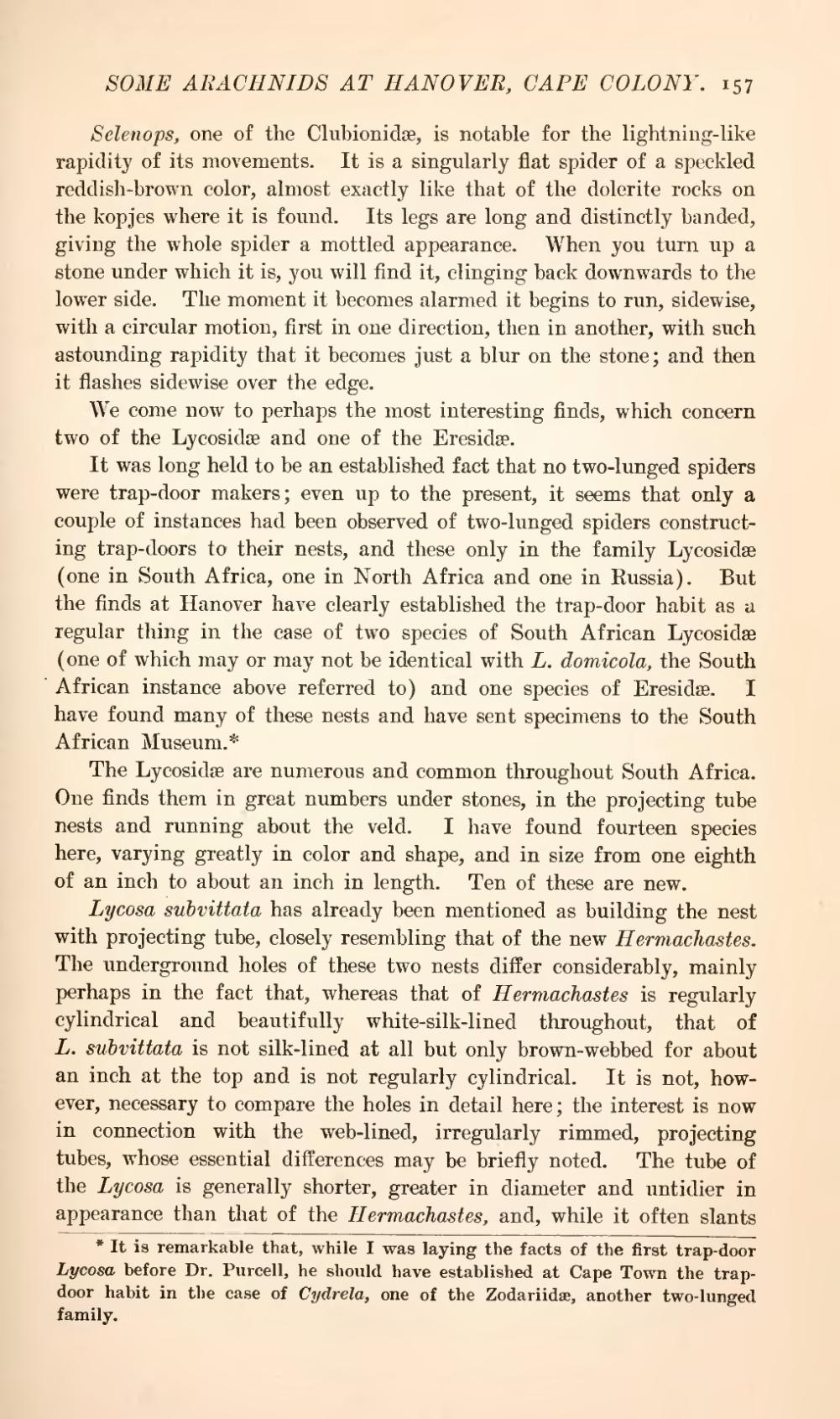Selenops, one of the Clubionidæ, is notable for the lightning-like rapidity of its movements. It is a singularly flat spider of a speckled reddish-brown color, almost exactly like that of the dolerite rocks on the kopjes where it is found. Its legs are long and distinctly banded, giving the whole spider a mottled appearance. When you turn up a stone under which it is, you will find it, clinging back downwards to the lower side. The moment it becomes alarmed it begins to run, sidewise, with a circular motion, first in one direction, then in another, with such astounding rapidity that it becomes just a blur on the stone; and then it flashes sidewise over the edge.
We come now to perhaps the most interesting finds, which concern two of the Lycosidæ and one of the Eresidæ.
It was long held to be an established fact that no two-lunged spiders were trap-door makers; even up to the present, it seems that only a couple of instances had been observed of two-lunged spiders constructing trap-doors to their nests, and these only in the family Lycosidæ (one in South Africa, one in North Africa and one in Russia). But the finds at Hanover have clearly established the trap-door habit as a regular thing in the case of two species of South African Lycosidæ (one of which may or may not be identical with L. domicola, the South African instance above referred to) and one species of Eresidæ. I have found many of these nests and have sent specimens to the South African Museum.[1]
The Lycosidæ are numerous and common throughout South Africa. One finds them in great numbers under stones, in the projecting tube nests and running about the veld. I have found fourteen species here, varying greatly in color and shape, and in size from one eighth of an inch to about an inch in length. Ten of these are new.
Lycosa subvittata has already been mentioned as building the nest with projecting tube, closely resembling that of the new Hermachastes. The underground holes of these two nests differ considerably, mainly perhaps in the fact that, whereas that of Hermachastes is regularly cylindrical and beautifully white-silk-lined throughout, that of L. subvittata is not silk-lined at all but only brown-webbed for about an inch at the top and is not regularly cylindrical. It is not, however, necessary to compare the holes in detail here; the interest is now in connection with the web-lined, irregularly rimmed, projecting tubes, whose essential differences may be briefly noted. The tube of the Lycosa is generally shorter, greater in diameter and untidier in appearance than that of the Hermachastes, and, while it often slants
- ↑ It is remarkable that, while I was laying the facts of the first trap-door Lycosa before Dr. Purcell, he should have established at Cape Town the trapdoor habit in the case of Cydrela, one of the Zodariidæ, another two-lunged family.
